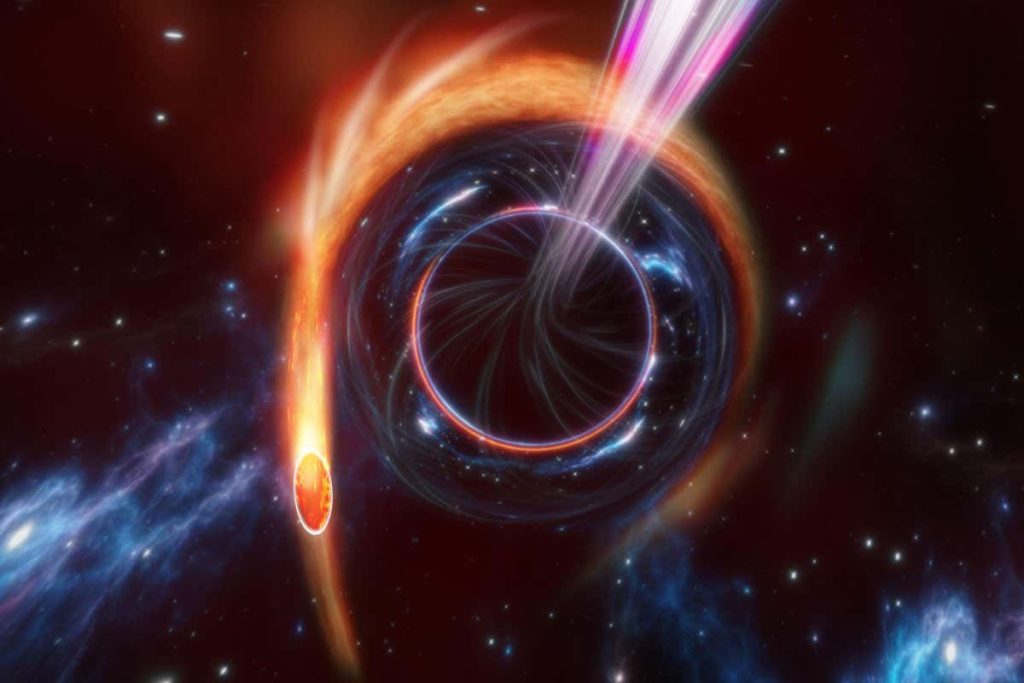A star orbiting a supermassive black hole at the centre of a distant galaxy was ripped apart in a tidal disruption event, the furthest ever observed
Space 30 November 2022
An artist’s impression of a tidal disruption event, created by a black hole swallowing a star
Carl Knox / OzGrav, ARC Centre of Excellence for Gravitational Wave Discovery, Swinburne University of Technology
Astronomers have found the most distant known example of a star being eaten by a supermassive black hole, creating one of the brightest events ever seen in the universe.
When a star drifts too close to a supermassive black hole at the centre of a galaxy like our own, it can be torn apart and swept into a disc surrounding the black hole, an energetic ordeal known as a tidal disruption event. Astronomers have seen about 125 of these events to date.
In February, researchers at the Palomar Observatory in California spotted a new, extremely bright tidal disruption event, naming it AT2022cmc. Follow-up observations by telescopes around the world revealed it took place in a galaxy roughly 12.5 billion light-years from us. “It’s a new record,” says Igor Andreoni at the University of Maryland. “It’s the furthest tidal disruption event ever discovered.”
Advertisement
This distant destruction was only visible because the black hole fired out a jet of plasma and radiation at close to the speed of light from its poles as it ate the star, a rare occurrence thought to only happen in 1 per cent of tidal disruption events. That jet was pointed directly towards us, making AT2022cmc “among the brightest” astronomical events ever observed, says Andreoni. Exactly how these jets are produced isn’t understood. “It’s still a mystery,” says Andreoni.
Further analysis of AT2022cmc could tell us more. The star eaten by the black hole was similar in size and mass to our sun, while the black hole that produced it was relatively low in mass, similar to our Milky Way’s central black hole but dwarfed by those in other galaxies. The black hole also appears to be revolving at a fast rate, which could be important for jet production, says Andreoni. “Black holes that spin very rapidly might be the key,” he says.
Journal reference: Nature, DOI: 10.1038/s41586-022-05465-8, Nature Astronomy, DOI: 10.1038/s41550-022-01820-x
Sign up to Lost in Space-Time, a free monthly newsletter on the weirdness of reality
More on these topics:

